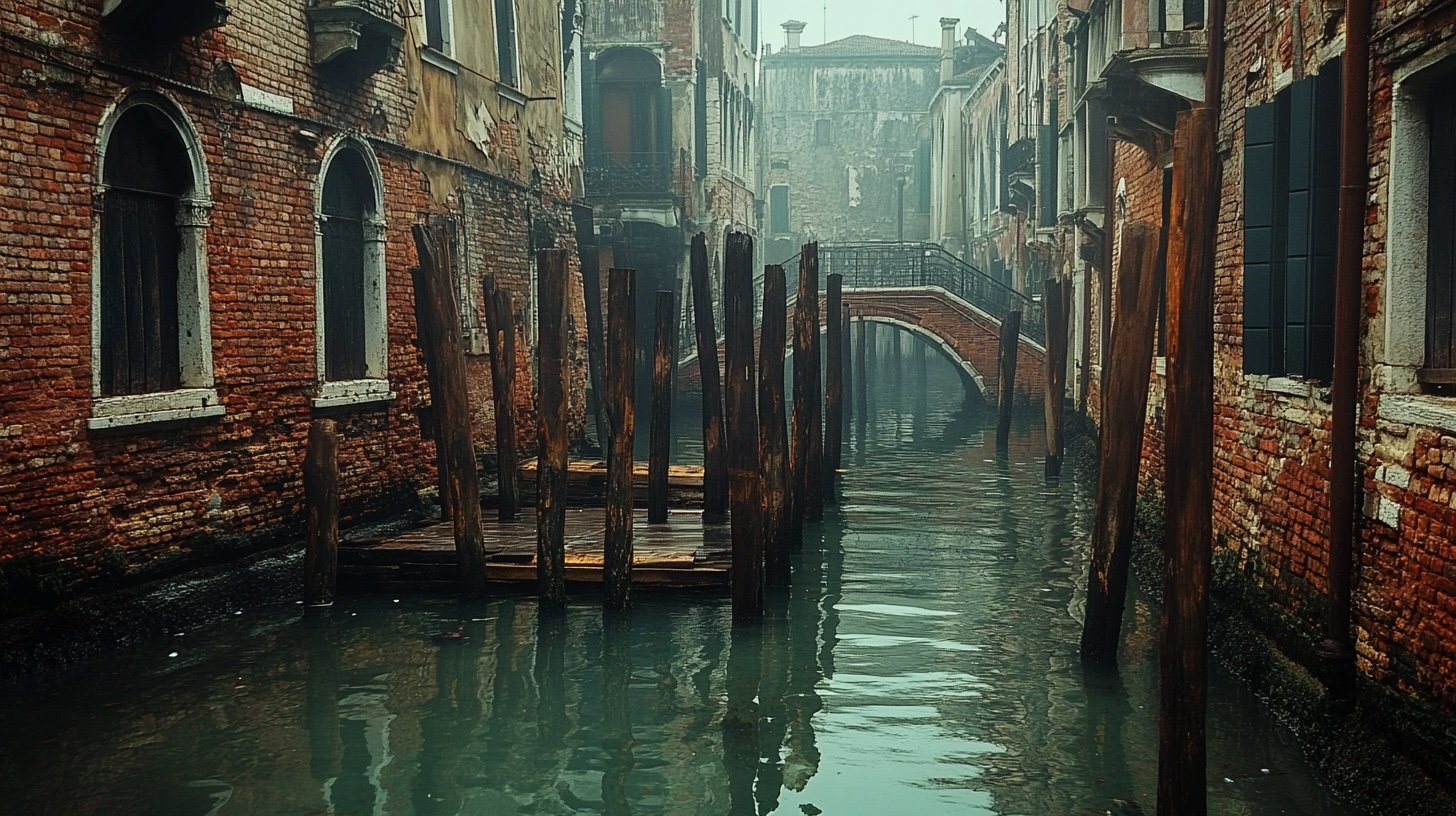Wood Rots, Water Rises—So Why Hasn’t Venice Given Up?
Venice is a miracle of engineering, a city that looks like it was built for aesthetic purposes alone, floating dreamily on the Adriatic, defying both gravity and common sense. For centuries, people have wondered: how is it still standing? Surely, by now, the whole place should have sunk, tilted dramatically, or at least had the decency to collapse in on itself like a badly constructed sandcastle. And yet, Venice remains, balancing on what seems like the most unreliable foundation imaginable—wooden piles driven into the lagoon floor.
Wood rots. That’s just a fact of life. Leave a wooden beam outside for too long, and nature reclaims it, turning it into a damp, mushy mess. So why haven’t the millions of wooden piles holding up Venice gone the way of forgotten shipwrecks? The answer lies in a bizarre combination of nature, science, and pure Venetian stubbornness.
For starters, the city’s foundations are buried in mud and clay, submerged in water where oxygen is scarce. And without oxygen, the bacteria and fungi that usually feast on wood like it’s an all-you-can-eat buffet simply can’t survive. No oxygen, no rot. Instead of decomposing, the wood remains intact, preserved in a timeless limbo beneath the city’s labyrinth of canals and bridges.
But the Venetians didn’t just pick any old wood and start hammering it into the seabed. They had standards. They used hardwoods like oak, elm, and most importantly, larch—a type of wood that doesn’t just tolerate water but actually thrives in it. Larch, in particular, has a natural resin that makes it incredibly resistant to decay, meaning that while other types of wood might surrender to the elements, larch just shrugs and carries on for centuries.
Something even stranger happens over time. As these submerged piles sit in the mineral-rich waters of the Venetian Lagoon, they undergo a process known as petrification. Tiny minerals seep into the wood’s structure, slowly turning it into something that resembles stone more than timber. Essentially, Venice isn’t just standing on wood—it’s standing on thousands of waterlogged, mud-covered, slow-motion fossils. Not quite marble, but not quite wood anymore either.
And then there’s the accidental genius of marine life. Over the years, the submerged portions of the piles have become home to barnacles, molluscs, and other tiny sea creatures that, instead of destroying the wood, have actually strengthened it. Layers of calcium deposits build up, reinforcing the wood like a kind of natural armour. It’s like an underwater insurance policy—just in case the whole ‘no oxygen, no rot’ system wasn’t enough.
The real credit, however, goes to the medieval Venetian engineers who figured all this out centuries ago without the benefit of modern science. They didn’t just shove the piles into the lagoon haphazardly and hope for the best. They arranged them in tightly packed formations, distributing the weight of the city evenly across the shifting seabed. On top of this wooden forest, they laid thick wooden planks, and over that, they stacked layers of Istrian limestone—a type of rock that doesn’t crumble when exposed to saltwater. The result? A foundation so solid that entire palaces and cathedrals have sat on top of it for centuries with barely a wobble.
Of course, Venice isn’t indestructible. Rising sea levels, heavy tourism, and the occasional reckless motorboat all take their toll. But for now, it continues to defy the odds, floating serenely on its ancient wooden legs, proving that sometimes, the best engineering solutions are the ones that seem the most absurd.
